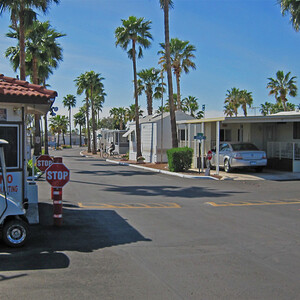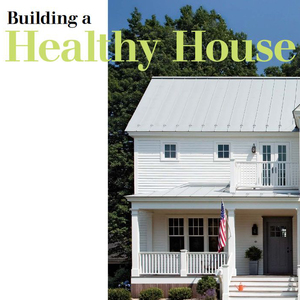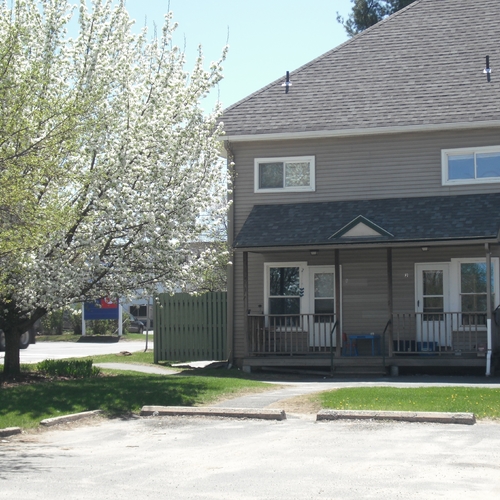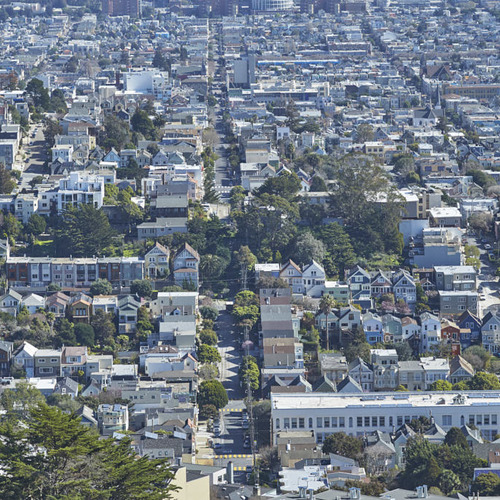
Predicting the future is cheap. Anyone can do it, and history shows that predictions made by experts are rarely any more accurate than predictions made by your average cranky uncle.
Since any idiot can jump into this swimming pool, it’s clearly my turn to do so. With more chutzpah than data, I hereby present my own housing predictions.
First, a look at trends and predictions that fell flat
We’ll start by examining a few trends and predictions that never blossomed.
The tiny house trend. Some tiny house enthusiasts have trumpeted tiny houses as the wave of the future. My prediction: they aren’t. In fact, in 2018 the average new single family home measured 2,600 square feet. That’s about the same size as it was in 2013 — so, while the trend for ever-bigger houses is starting to level off, there aren’t any signs of a rush toward tiny houses. Obviously, a 2,600 square foot home is still considerably bigger than 2,400 square feet, which was the size of the average new home in 2011.
Almost everyone wants more space than a tiny house provides. The only reason that people in New York and San Francisco put up with their dinky apartments is that larger apartments are ridiculously expensive.
The smart house trend. While it’s true that some Americans love web-enabled electrical appliances, and want to use a phone app to control every device in their home, there are even more Americans who are worried that smart appliances invite hackers (or ex-husbands, or rogue government agents) to invade their lives. Other Americans aren’t happy about the fact that smart appliances will provide new opportunities for marketing companies to monitor their daily routines and monetize the gathered data. I predict that the smart house trend will be a bust.
Cohousing. For some…
Weekly Newsletter
Get building science and energy efficiency advice, plus special offers, in your inbox.

This article is only available to GBA Prime Members
Sign up for a free trial and get instant access to this article as well as GBA’s complete library of premium articles and construction details.
Start Free TrialAlready a member? Log in















24 Comments
I think you need to live in a smart home for a while Martin... :)
The convenience of walking downstairs with your hands full and asking Google to get the lights for you, or being able to broadcast a message throughout your home without yelling, or turning on music that follows you from room to room, perfectly seemlessly synchronized, to having a digital assistant curate to do lists and shopping lists... It's empowering.
Most people's phones are rarely more then 3 feet from them nowadays anyways, and are already listening. An extra microphone makes no difference.
Steve,
You wrote, "Most people's phones are rarely more then 3 feet from them nowadays anyways, and are already listening. An extra microphone makes no difference."
It sounds like you've thrown in the towel on privacy -- and that's common, especially among younger generations. Perhaps your prediction will prove better than mine; we'll see.
Your method of making a shopping list -- requiring an internet connection, a smart speaker, and a cell phone -- sounds much more complicated than mine, since all I need is a pencil and a scrap of paper. Moreover, it's easier for me to consult my list when I'm pushing a shopping cart than it is for you to pull our your smart phone and find your list.
Does my wife want me to be able to broadcast my voice at will through every room in our house? I seriously doubt it.
It's not complicated at all!
"Hey Google! Add onions to my shopping list" uttered whilst you continue to go about preparing your meal, without having to worry about cleaning your hands, finding a pencil, finding a piece of paper, writing it down and promptly forgetting what you were doing.
And if your house is anything like mine, you already can and do broadcast your voice throughout the house at will. Your method just causes far more vocal strain, and is invariably followed by: "WHAT?".
I will give you consulting the list is annoying though... Though I've just learned you can link a printer to Google and then request your shopping list be printed... I may have to give that a wack.
Steve,
If I were to say, "Hey Google! Add onions to my shopping list" while I was cooking, nothing would happen -- because I have not yet purchased a smart speaker or a smart phone. So while it's not complicated for you, it is for me, because your method would require me to go shopping for equipment I don't own (and add another monthly bill to my current onus of monthly bills).
And you appear to have conceded that it's easier to consult a scrap of paper while shopping than to consult an electronic list that lives in the cloud.
Come on now Martin, you know that's not what I meant. That's like saying setting my ERV control is hard because I don't own an ERV... Obviously, some assembly is required.
Smartphone household penetration is at 75% and rising quickly, and nearly half of US households will have a digital assistant by the end of this year according to a report issued by Adobe.
You are a member of a quickly dying breed.
One could even argue that the smart device "fad" will exceed the status quo as early as next year, with more houses having a digital assistant than not.
I was at Best Buy for black Friday, against my better judgement. They had given up on putting the Google home mini units on display, and were just wheeling in skids of them.
https://venturebeat.com/2018/09/10/adobe-nearly-half-of-u-s-households-will-own-a-smart-speaker-by-the-end-of-2018/
Steve,
Yes, I am probably "a member of a quickly dying breed." As I admitted in Comment #2, "Perhaps your prediction will prove better than mine."
Martin,
Agreed that the climate disruption will likely dwarf all the other trends. In my estimation (and based on the most recent data and literature over the past couple of years), this will happen a lot sooner than most people have been led to believe. The peer-reviewed literature is finally coming to terms with what the broader scientific community has suspected for some time now: feedback loops and interdependence of climate systems can cause formerly linear changes to become exponential.
One recent and relevant example, hot off the presses for the science nerds among us: a new paper in the Journal Science, "Cascading regime shifts within and across scales." The actual publication in Science is behind a paywall, but a preprint version is available from BioRxiv (just ask Google, using your keyboard if necessary).
I'll go out on a limb of my own, and say that 2019 is likely to be marked by still more climate disasters producing still more climate refugees. Many of them may end up in the market for in a smaller-than-average (or even tiny) house somewhere far from the ocean.
This is my favorite view of the future of affordable housing. Autonomous and self contained, these pods, or Class B electric motorhomes will disrupt everything from automobiles to homebuilding, to hotels, to airlines, airports, apartment buildings, mass transit, Uber, Airbnb, and the entire travel industry. No building permits or land ownership required, and their cost will eventually go to near zero while solving climate refugee problems.
https://medium.com/@nathanwaters/driverless-van-homes-0-living-costs-solution-to-the-global-housing-crisis-884ea1174599
Kevin,
Living in a van? Attractive to some, but not to most. This quote from your linked article is relevant:
"Where do they poop? Public toilets, office, work, gym.
Where do they shower? Gym, public showers.
Where do they do laundry? Laundromats."
My prediction is different from yours. Here's my prediction: This trend is going nowhere.
All of these would be annoying to most people, but the pooping thing would have to scare off at least 99% of the population. Even if you were a single person, driving your residence to a 24-hr McDonald's to take a crap in the middle of the night is not something most people are going to put up with for longer than a week. Now imagine you're a family, and every time this happens to any member of the family, the whole family is driving along to that McDonald's. Then you have the daily struggle of finding an illegal parking spot, and wondering if you're going to get ticketed that night and have to drive somewhere else. And you need to add about $10,000-$20,000 in parking fines to your annual budget. In the article they mention a couple of municipalities where overnight street parking is allowed for occupied vehicles; those are rare exceptions, don't help the 99.9% of the rest of the country, and are unlikely to be "growth industries". The idea that this "living in a van" idea is going to become mainstream is one of the stupidest things I've ever read, and seriously makes me wonder if it's not satirical, even though I couldn't find any telltale signs of that being the case.
Trevor,
It's a real movement, pun intended.
There are thousands of articles about it, but I give you a real journalist:
https://www.mercurynews.com/2018/08/19/van-life-my-80-square-foot-solution-bay-area-housing-crisis/
Martin,
I don't know about the self-driving Uber boom. If everyone is calling up a car every morning rather than just driving the one parked in their garage, there would still be just as many "drivers" on the road. They would just happen to be AIs and algorithms. It's unclear that AIs would ease traffic if population density was constant, especially if they share the road with the non-AI drivers. I highly doubt AIs would ease traffic much if the population density was increasing on some linear pace with the increased density you predict.
Now if you can combine this with a "slugging" program (www.slug-lines.com) such as the system in the Washington D.C. area, you might be on to something. However, most of the slugs in the D.C. area are mostly people from relatively far outside the beltway catching rides into the area rather than people nearby commuting together.
My cheap and idiotic prediction is that people in increasingly more densely populated areas will have to embrace some pretty different ways of doing business in the future: compulsory teleworking (half my job can be done from home but I prefer the office), RELIABLE mass transit networks that are easy to access (which surprise!, may actually have steep upfront costs), condensed/shortened work weeks. And those are just the carrots. I could think of some pretty off-putting sticks.
#vanlife is already huge and growing. The only prediction to make is what the ultimate market penetration will be.
Kevin,
I'm not sure what "#vanlife" means, but I understand your point. I'll be more specific: Fewer than 2% of Americans will want to live in a van.
Well 6.5 million off-grid easily relocatable dwellings means it is certainly a trend worth studying.
To me the most compelling aspect is that no real estate needs to be acquired to implement these van homes. Parking is generally free, even though in many cities the law requires you to move your vehicle every 72 hours.
Antonio,
As far as I understand, self-driving cars will (theoretically) reduce traffic congestion due to (a) the ability of self-driving cars to follow one another with less space between cars (due to sensors and the increased predictability of robot drivers), and (b) the possibility of ride sharing (a sophisticated form of car pools), and (c) the fact that kids can be dropped off at school without requiring the parent to drive back home after dropping off the kids.
Will there be less traffic congestion? As I wrote, "it’s very hard to predict."
The effectiveness of (a) depends on every single car on the road being autonomous. I don't see that happening in the next 10 years, maybe not even 20 years. (c) Seems like a very minor contribution to overall traffic congestion.
Trevor,
I'm not making any predictions in this department. (After all, I wrote, "It’s very hard to predict how these new vehicles will change our housing patterns.")
In 1910, it was hard to imagine a world with more automobiles than horse carts. By 1940, horse carts were very rare in U.S. cities. So it's conceivable that robot drivers will displace human drivers in just a few decades.
1910 to 1940 is thirty years. A few decades is more believable. Speaking as someone who has been known to drive a vehicle for 20 years, it might take me that long to adapt to the technology.
It's unrelated to self-driving cars, but around here the garage has completely morphed into a storage area for excess stuff, tools, and garden equipment. Developers have acknowledged this and now often provide a door too small to get almost any car inside. Probably the next step will be abandoning the overhead door. Once the link between this storage space and the car is broken, designers will be free to relocate it within the plan, which will fundamentally change the shape of the typical North American house.
Malcolm,
That's an interesting prediction. I think it may apply to British Columbia -- but probably not to Texas, where garage doors are getting bigger, not smaller.
This article is very insightful. Our clients may be a niche market, but I think it's worth mentioning what these homeowners (who which also frequent Green Building Advisor articles) desire in a home on average. While the occasional client wants something small, it is typically for a guest cottage not to the tiny home. Our clients are more likely to build a garage first with an apartment included to live in while they build or to buy a camper to live in during construction.
- Simple, easy to build home with low energy consumption that incorporates at least some passive measure for heating and cooling (however, views other than south and odd sites also are important)
- First floor typically to have main rooms (esp. master bedroom) along with a second bedroom/bath for an office or aging parent. The square footage typically ranges from 1100 s.f. to 1700 s.f. to include many unique nooks and special requirements. It is not unusual for the garage to be large to include a shop and outdoor tools or "toys" or they may have a separate metal building.
- A daylight basement for overflow spaces of workshop, exercise, or small self-contained suite/apartment where possible for either renters (long term or AirBnB), aging parents or visiting (esp. kids who have left home) family
- Either Zero Energy with PV or Zero Energy Ready to add PV in the future (either on the roof, free standing or on a detached garage)
- To live in a rural area to enjoy the peace and quiet that is absent of city noise (often it is on inherited family land)
- To be able to find a like-minded builder and HERS Rater (but often challenges)
- To live within an hour drive of a larger city (but often further)
- Near a small community with like-minded people that often have a strong self-sufficiency
- Typically enjoy gardening and the outdoors in many ways (hiking, nature, hunting, etc.)
- A home to fit their retiring and downsizing life, but often to accommodate a growing, young family
I've been thinking about this in light of the recent discussion we had here around off-grid housing. It seems like the path both net-zero and off-grid are heading is towards increased efficiency, but very little appetite for decreased comfort, or decreased consumption that would affect lifestyle, on the part of the occupants. My bet is that we will see both incorporating very large PV installations (and eventually perhaps large batteries), to sustain the same lifestyle people have enjoyed being grid-reliant. In all the talk about efficacy and conservation, I haven't seen an appetite to return to the sacrifices early adaptors made in the 70s and 80s.
Malcolm,
I agree that, outside of the (tiny) tiny house movement, there isn't much evidence that North Americans want to reduce comfort in favor of simplicity.
I'm not sure what the "typical" off-grid house will look like in 10 years, but I predict that the percentage of homes that are off the grid will continue to be minuscule.
Log in or become a member to post a comment.
Sign up Log in